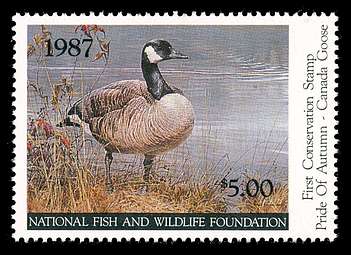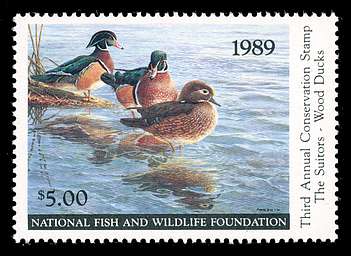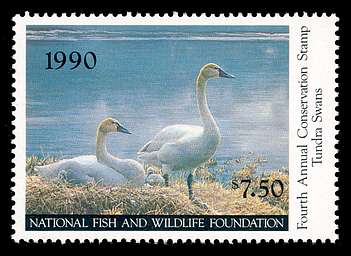| National Fish And Wildlife Foundation |
| Item # |
|
Never Hinged US$ |
||
| 247029 |
NFWF 1987 Conservation Stamp [1987 $5.00 Canada Goose, artist Robert Bateman] NH with VF centering. First conservation stamp issued by the National Fish and Wildlife Foundation, a Congressionally Chartered foundation created in 1984. Typical online prices for this stamp are around $10. ACTUAL item. |
7.50 |
||
| 247030 |
NFWF 1988 Conservation Stamp [1988 $5.00 Mallards, artist Maynard Reece] NH with XF centering. Second conservation stamp issued by the National Fish and Wildlife Foundation, a Congressionally Chartered foundation created in 1984. Typical online prices for this stamp are around $10. ACTUAL item. |
7.50 |
||
| 247031 |
NFWF 1989 Conservation Stamp [1989 $5.00 Wood Ducks, artist John Serry-Lester] NH with XF centering. Third conservation stamp issued by the National Fish and Wildlife Foundation, a Congressionally Chartered foundation created in 1984. Typical online prices for this stamp are around $12.50. ACTUAL item. |
9.75 |
||
| 247032 |
NFWF 1990 Conservation Stamp [1990 $7.50 Wood Ducks, artist Robert Bateman] NH with XF centering. Fourth conservation stamp issued by the National Fish and Wildlife Foundation, a Congressionally Chartered foundation created in 1984. Typical online prices for this stamp are around $20.00. ACTUAL item. |
14.00 |